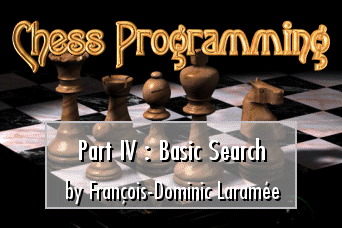11/10 - 11/12 @ Montréal, Canada
12/5 - 12/7 @ Shanghai, China
12/24 - 12/27
2/28 - 3/4 @ San Francisco, CA
More events...
2406 articles in the reference section.
Help us fight cancer!
Join SETI Team GDNet!

|
Grandpa MiniMaxThe basic idea underlying all two-agent search algorithms is Minimax. It dates back from the Dark Ages; I believe Von Neumann himself first described it over 60 years ago. Minimax can be defined as follows:
How does this work? Well, suppose that there is a simple game which consists of exactly one move for each player, and that each has only two possible choices to make in a given situation. The evaluation function is only run on the final board positions, which result from a combination of moves by Min and Max.
Max assumes that Min will always play perfectly. Therefore, he knows that, if he makes move A, his opponent will reply with D, resulting in a final evaluation of -2 (i.e., a win for Min). However, if Max plays B, he is sure to win, because Min's best move still results in a positive final value of 5. So, by the Minimax algorithm, Max will always choose to play B, even though he would score a bigger victory if he played A and Min made a mistake! The trouble with Minimax, which may not be immediately obvious from such a small example, is that there is an exponential number of possible paths which must be examined. This means that effort grows dramatically with:
In Chess, for example, a typical branching factor in the middle game would be about 35 moves; in Othello, around 8. Since Minimax' complexity is O( B^n ), an 8-ply search of a chess position would need to explore about 1.5 million possible paths! That is a LOT of work. Adding a ninth ply would make the tree balloon to about 50 million nodes, and a tenth, to an impossible 1.8 billion! Luckily, there are ways to cut the effort by a wide margin without sacrificing accuracy.
|
||||||||||||||||
|
|
||||||||||||||||